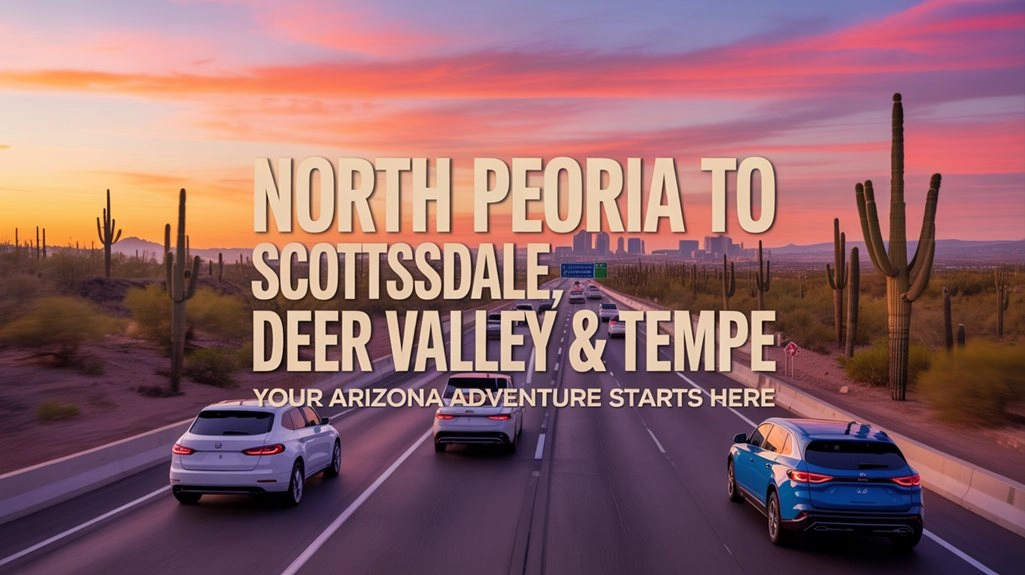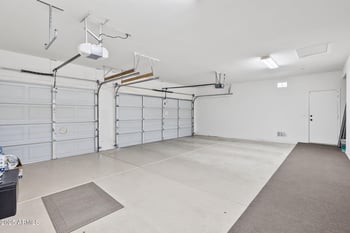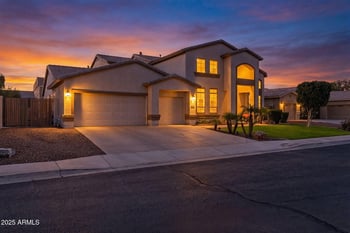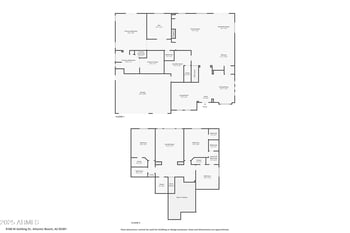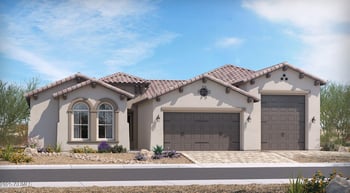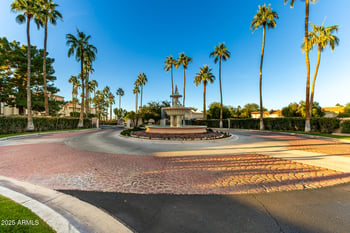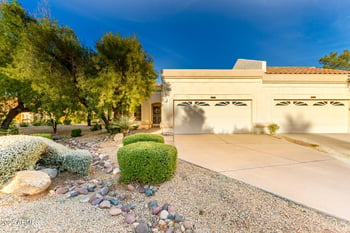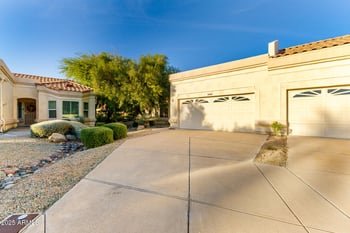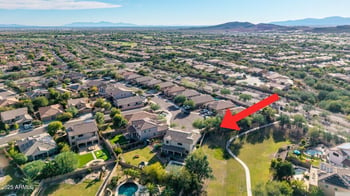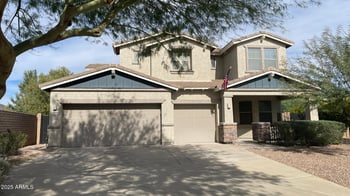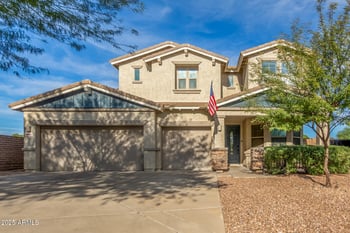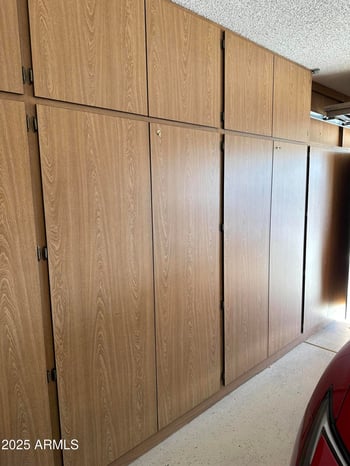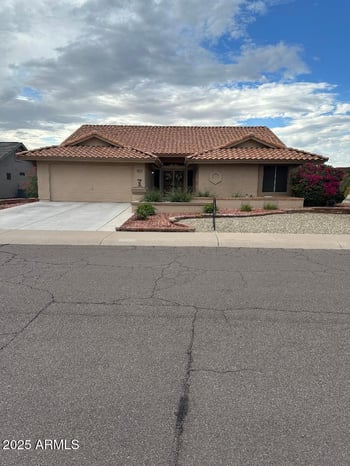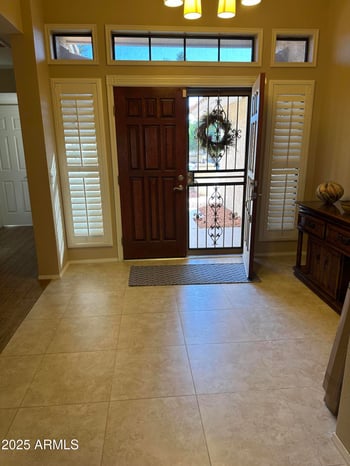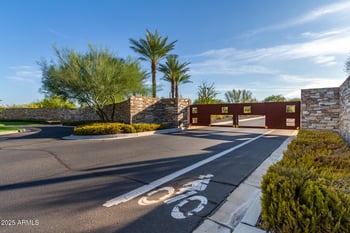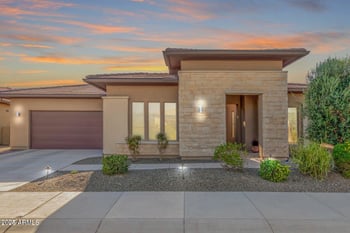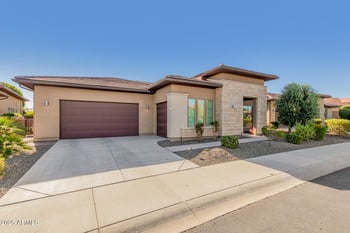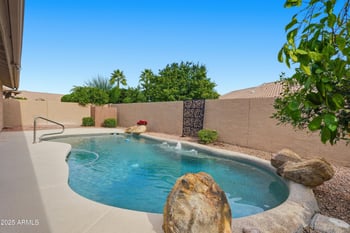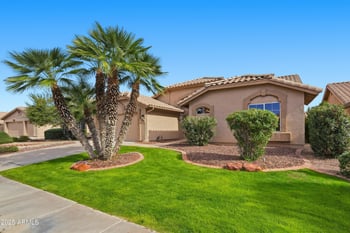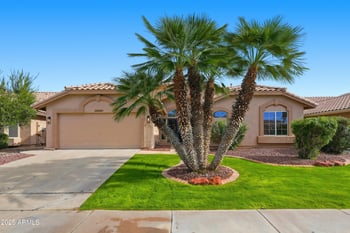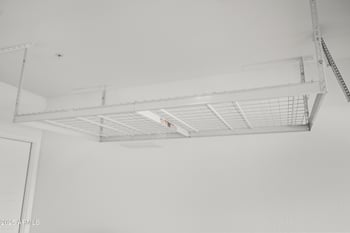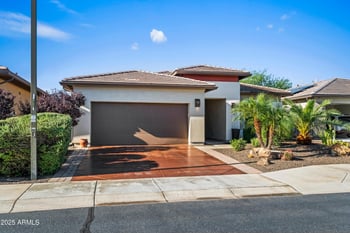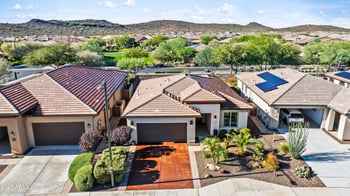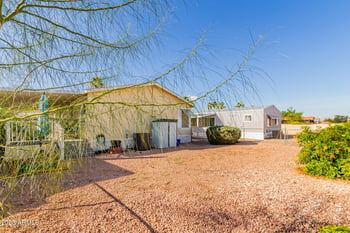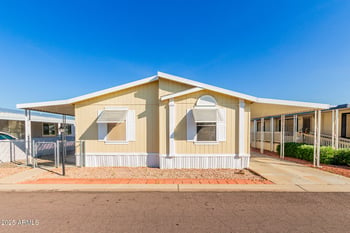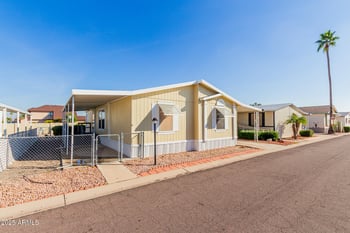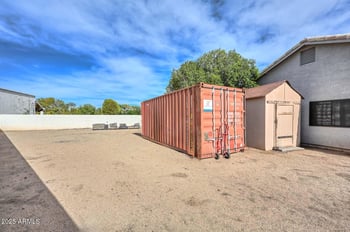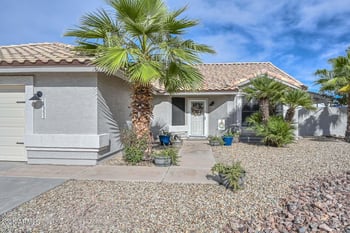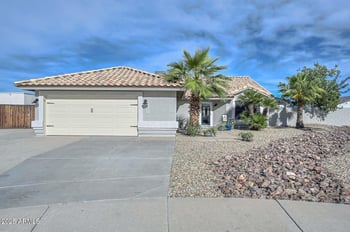After years of walking listings across Peoria — from the guard-gated fairways of Blackstone to the family cul-de-sacs in Vistancia Village — I’ve learned one thing about homeowners’ associations: they shape how people actually live here. Some buyers love the order and community upkeep; others feel boxed in by the fine print they didn’t read until after closing.
Around here, HOAs handle more than landscaping and signage. They set the tone of the neighborhood, decide what colors you can paint your trim, and sometimes even who can rent your house. My goal with this guide is to translate all that paperwork into plain language — what the rules mean, what the fees cover, and how to avoid surprises before you sign.
If you’re considering a home anywhere in Peoria, especially inside communities like Vistancia, Trilogy, or Fletcher Heights, here’s what locals wish they’d known before moving in.
City Rules vs. HOA Rules: When the Stricter One Wins
One of the first lessons I learned selling homes around Peoria was this — you can follow every city rule and still run into trouble with your HOA. The reverse almost never happens. The HOA usually wins day to day because it controls design approvals, parking notices, and violation letters that hit your mailbox first.
Peoria’s city code is fairly practical. It says you can’t store RVs or boats on public streets longer than 24 hours, and if you keep them at home, they have to sit behind a six-foot solid wall or approved screen (Peoria City Code). That sounds reasonable until you move into a neighborhood like Vistancia Village A or Fletcher Heights where the CC&Rs add a second layer — “no exterior storage of recreational vehicles visible from neighboring lots or streets.” Even a side-yard pad behind a gate can draw a courtesy notice.
The same overlap happens with short-term rentals. Peoria requires a city permit before you can list your property for stays under 30 days (Peoria Short-Term Rental Registration). But even if the city issues that permit, the HOA may still ban or restrict them in its own covenants. I’ve seen buyers close on a home thinking they could rent it part-time, only to find an old amendment buried deep in the community documents that says otherwise.
When you live here long enough, you notice a pattern — the neighborhoods that feel the most polished also tend to be the ones with the most rules. It’s not a bad thing, just something to plan for. If you’re the kind of person who loves a spotless curb line and quiet evenings, those restrictions protect your peace. If you’d rather wash your boat in the driveway on a Saturday, you’ll want to read those CC&Rs before falling in love with the view.
Reading CC&Rs Like a Local: Drainage, Paint, and the Things You Don’t Expect
Every HOA has its version of the “design guidelines.” Around Peoria, that usually means a binder full of rules about paint colors, roof materials, and the direction your pavers can drain. In Vistancia, for example, the Design Review Committee can reject a patio layout if water might flow toward your neighbor’s foundation. You can see those details in the Vistancia Community Design Guidelines. I once had a buyer whose dream outdoor kitchen was delayed three months while we re-graded plans to meet that exact clause.
Paint colors are another small-print surprise. Most Peoria HOAs approve specific palettes — usually muted desert tones to blend with the Sonoran backdrop. Try to go a shade brighter, and you’ll be politely asked to repaint within thirty days. The rule isn’t arbitrary; in our heat, darker pigments absorb more sunlight and fade faster, and the community prefers to avoid the patchwork look that comes with mismatched repaint jobs.
Then there are the hardscape rules. Some buyers assume pavers are “free-range” projects, but in HOA land they count as an exterior modification. Even simple walkway extensions need approval, especially if they might alter drainage or visible grading. My rule of thumb: if it touches dirt, concrete, or color — get it in writing before you start.
Reading CC&Rs isn’t exciting, but it’s a little like learning the local dialect. Once you understand the rhythm of what the HOA looks for — consistent sight lines, quiet driveways, tidy paint, no redirecting water toward your neighbor — you stop seeing the rules as a wall and start seeing them as part of the landscape that makes these communities feel orderly and safe.
Fees & Transfer Costs: The Line Items That Catch Buyers Off Guard
HOA dues in Peoria vary widely, but the shock usually comes at closing. Every association charges its own transfer and disclosure fees. In Vistancia Village A, for instance, there’s a $200 transfer fee, a $400 resale disclosure and lien estoppel, plus a $277 working capital contribution — and that’s before the Vistancia Maintenance Corporation adds its $75 administration fee (Official HOA Fee Schedule). Buyers don’t always see those numbers until their title company sends the final breakdown.
Blackstone at Vistancia runs quarterly dues (around $648) because of its gated entry, private golf course, and full-time management staff. Trilogy, being 55+, folds in club access to amenities like the Kiva and Mita Club — so your HOA fee doubles as a lifestyle membership. It’s convenient, but it also means those monthly checks include more than landscaping.
I tell clients to ask two questions early: “Is there a master association?” and “What’s the total of all assessments?” It sounds simple, but layered associations are common here, and you can easily find yourself paying village dues, master dues, and a maintenance assessment all at once. For the legal outline of what must be disclosed, review Arizona Revised Statute §33-1806.
Layered Associations Explained: How Vistancia’s HOA Structure Works
Vistancia is the best local example of how layered associations operate. Every home belongs to its neighborhood HOA — like Village A or Blackstone — and also to the Vistancia Maintenance Corporation (VMC). The VMC maintains shared infrastructure like the Discovery Trail, arterial landscaping, and drainage washes that stretch across the development. You can review these governance documents at the Vistancia Association Portal.
The result is predictable: even if you live in a smaller sub-association like Acacia Grove or Primrose Estates, part of your dues still goes toward maintaining amenities you might not use daily. I’ve had clients ask, “Why am I paying for a trail system across town?” The answer is simple — those shared spaces keep property values consistent and protect the whole master plan from looking patchy.
For buyers who want the visual quality without multiple fees, looking at older communities outside the Vistancia master plan — like Fletcher Heights or Terramar — can make more sense. They still have HOAs, but usually a single layer with simpler budgets.
Short-Term Rentals & Tenant Rules
Peoria allows short-term rentals with a city permit (City STR Registration), but HOAs have the final say on whether they’re welcome. In Vistancia Village, owners must file a Tenant Registration Form, pay a $25 registration fee, and issue tenant amenity cards for $15 each. Some villages require leases of at least 30 days and temporarily suspend the owner’s pool and gym access while the tenant occupies the property.
These details seem small until you manage an investment property or plan to house relatives short-term. I once helped a couple who bought in Trilogy thinking they could host their college-aged grandkids for a few months; turns out the community’s age restrictions applied to everyone in residence, even guests over 30 days.
The safest move is to confirm rental policies with both the city and the HOA before you close — not after your first violation letter.
Parking, RVs & Common Violations
If you’ve ever driven Peoria streets late at night, you’ll notice which neighborhoods enforce parking rules. In some subdivisions, overnight street parking is banned between midnight and 5 a.m. Others limit guest parking to 72 hours before requiring a permit. Those rules come straight from the HOA, not the city. You can compare against Peoria’s baseline regulations through the Peoria Code Compliance Department.
RVs, boats, and trailers follow a similar pattern. The city allows storage behind screened walls or in garages, but most HOAs prohibit visible parking altogether. Even a temporary stay while loading or cleaning can prompt a warning. It’s part of why so many local storage facilities stay full year-round.
The best defense is simple: if you plan to bring recreational vehicles or extended family visits, check the community handbook first. These are the rules that separate “quiet satisfaction” from “constant letters.”
Community Snapshots: What Life Feels Like in Peoria’s HOA Neighborhoods
Vistancia feels like its own small city — pools, walking trails, two community centers, and events that fill the parks every weekend. The HOA’s touch is visible everywhere, from the desert landscaping along Happy Valley Parkway to the spotless roundabouts that stay lit at night.
Blackstone at Vistancia is quieter, more exclusive, wrapped around a private golf course with gated entries and full-time security. The HOA’s standards here lean toward luxury: approved landscape palettes, custom-architecture oversight, and community privacy that residents value for its calm.
Trilogy at Vistancia blends resort living with age restrictions. It’s a 55+ community, but the amenities — Mita Club, fitness center, pickleball courts, dining — make it feel like a country club. HOA rules here are strict but consistent, which keeps the experience seamless for residents who value order.
In contrast, Fletcher Heights and Terramar represent classic Peoria suburbia — single-layer HOAs, family events, and fewer architectural hurdles. They’re easier for homeowners who prefer a little more flexibility without giving up neighborhood cohesion.
Due Diligence Checklist: What I Tell My Clients Before Closing
- Request the full HOA packet early — CC&Rs, design guidelines, meeting minutes, and pending litigation. See the Arizona HOA Information & Resource Center for what’s included by law.
- Ask when the last special assessment occurred and whether any are planned.
- Review rental and parking rules in writing, not by hearsay.
- Confirm how many associations your lot belongs to (village, master, or maintenance corp).
- Budget for transfer, working capital, and disclosure fees up front.
- Check city code for additional regulations beyond HOA enforcement.
When to Call the HOA vs. the City
A simple way to remember it: if it’s about aesthetics or noise inside the community, call the HOA. If it’s about construction, permits, or setbacks, call the city. Peoria’s Code Compliance team handles issues like illegal walls, unpermitted patio covers, and sign violations. Your HOA deals with paint, weeds, and cars parked the wrong way. Visit the Peoria Code Compliance Department for contact info and online reporting.
Most conflicts resolve faster when both sides are treated as partners, not referees. I’ve seen a five-minute conversation with a community manager save a homeowner hundreds in fines. Being courteous and proactive goes a long way here.
Final Thoughts
Living in an HOA neighborhood in Peoria isn’t about restriction — it’s about rhythm. Once you understand the rules, they fade into the background of everyday life. Whether you’re drawn to the structure of Blackstone or the family energy of Vistancia, the right HOA can protect your investment and keep the neighborhood looking like the place you fell in love with.
If you’re planning a move and want a clear-eyed look at how each Peoria community operates, I’m always happy to share what I’ve seen on the ground — the good, the tedious, and everything in between. It’s what helps buyers make confident decisions long before closing day.

_0003.jpg)
